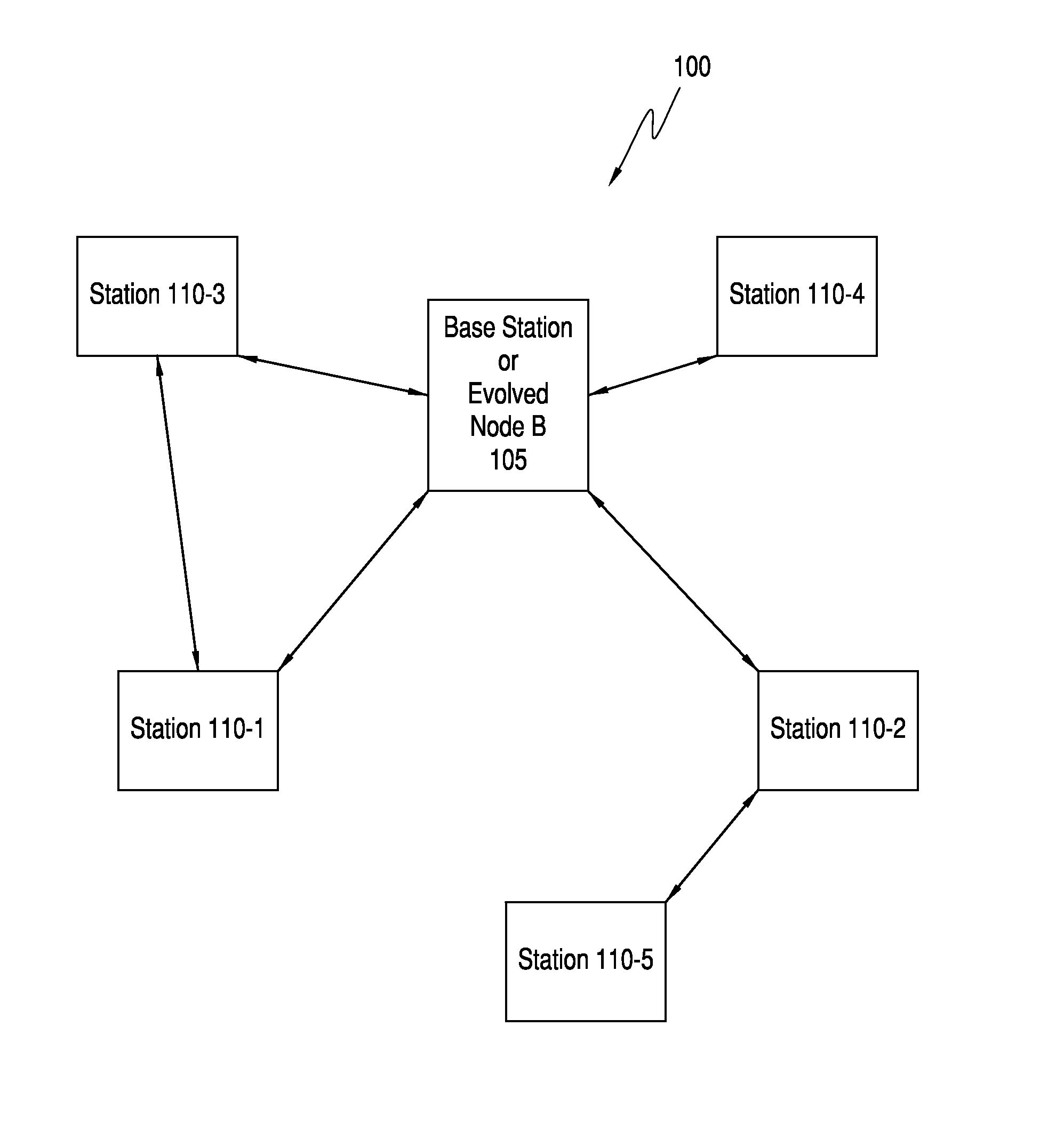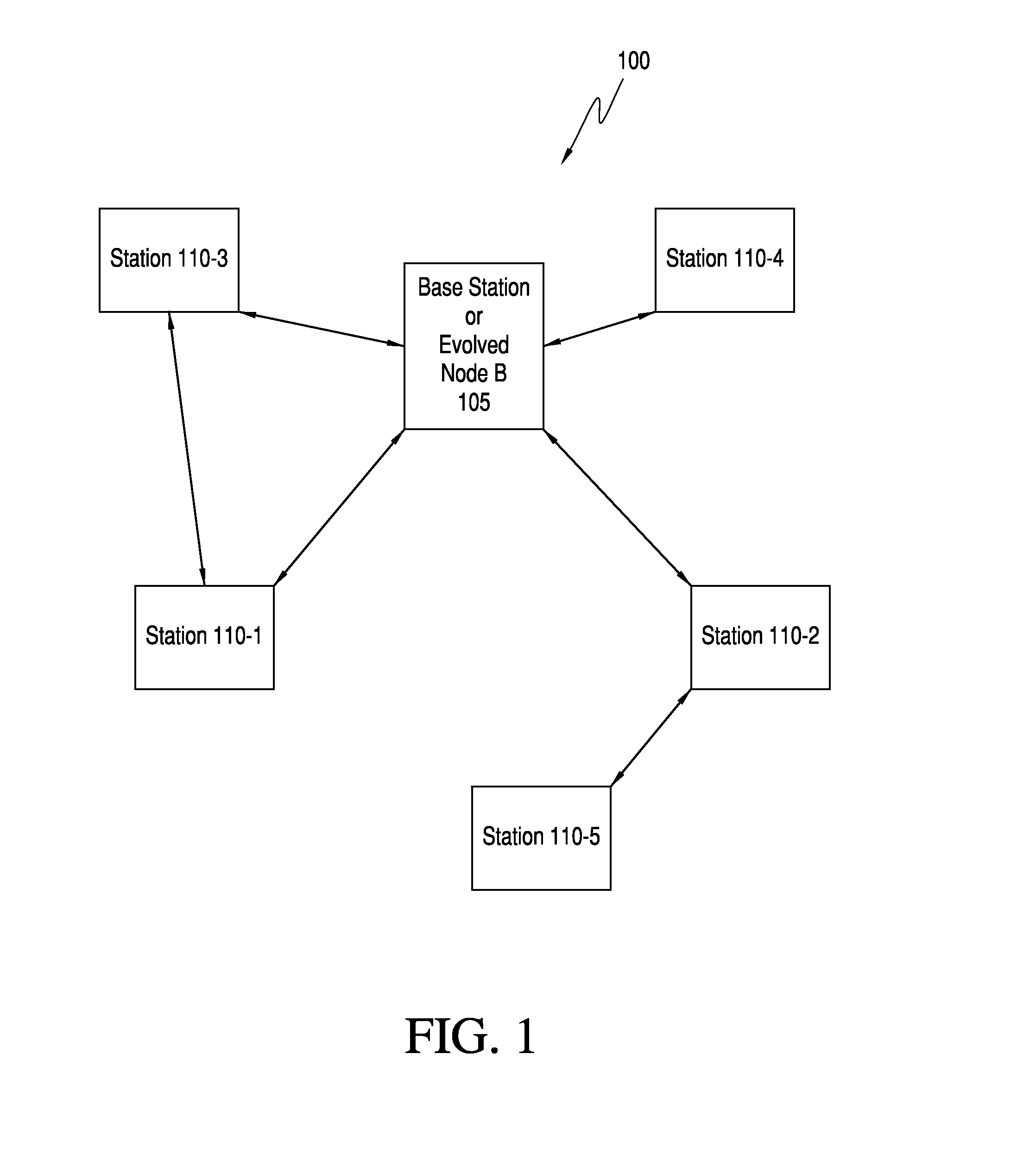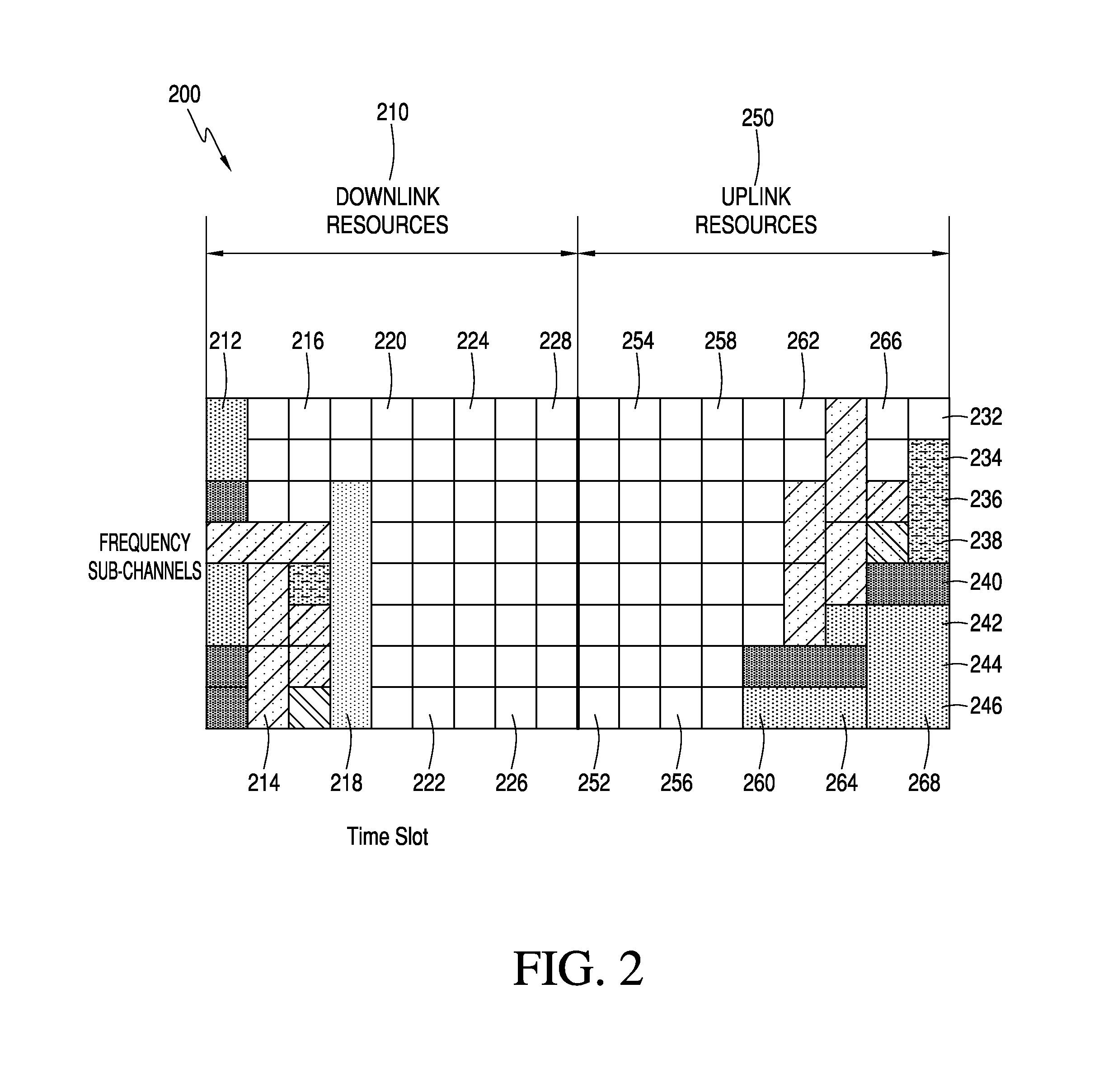Method and apparatus for scheduling peer-to-peer communication links
a peer-to-peer communication and link scheduling technology, applied in the field of wireless communications, can solve the problems of low-power signal desensitization or “desensitization” of the receiver in the receiving station to the low-power signal, and the low-power signal to fall below the receiver's detectability threshold
- Summary
- Abstract
- Description
- Claims
- Application Information
AI Technical Summary
Benefits of technology
Problems solved by technology
Method used
Image
Examples
Embodiment Construction
[0024]Some embodiments are directed to methods and apparatuses for allocating resources for peer-to-peer communications. An evolved Node B identifies resources to designate for peer-to-peer communications. The evolved Node B creates or updates peer sets from measured performance information received from one or more stations. The measured performance information includes at least one quality metric requested with a downlink signal sent from the evolved Node B to the one or more stations. The evolved Node B determines excluded timeslots and preferred timeslots based on current resource assignments in each timeslot and based on the peer sets, marks potential resources in a peer-to-peer designated portion of a resource allocation map, and allocates one of the potential resources for peer-to-peer communication between a transmitter station and one or more receiver stations.
[0025]FIG. 1 is a block diagram of a wireless communication network in accordance with some embodiments. Wireless c...
PUM
 Login to View More
Login to View More Abstract
Description
Claims
Application Information
 Login to View More
Login to View More - R&D
- Intellectual Property
- Life Sciences
- Materials
- Tech Scout
- Unparalleled Data Quality
- Higher Quality Content
- 60% Fewer Hallucinations
Browse by: Latest US Patents, China's latest patents, Technical Efficacy Thesaurus, Application Domain, Technology Topic, Popular Technical Reports.
© 2025 PatSnap. All rights reserved.Legal|Privacy policy|Modern Slavery Act Transparency Statement|Sitemap|About US| Contact US: help@patsnap.com



